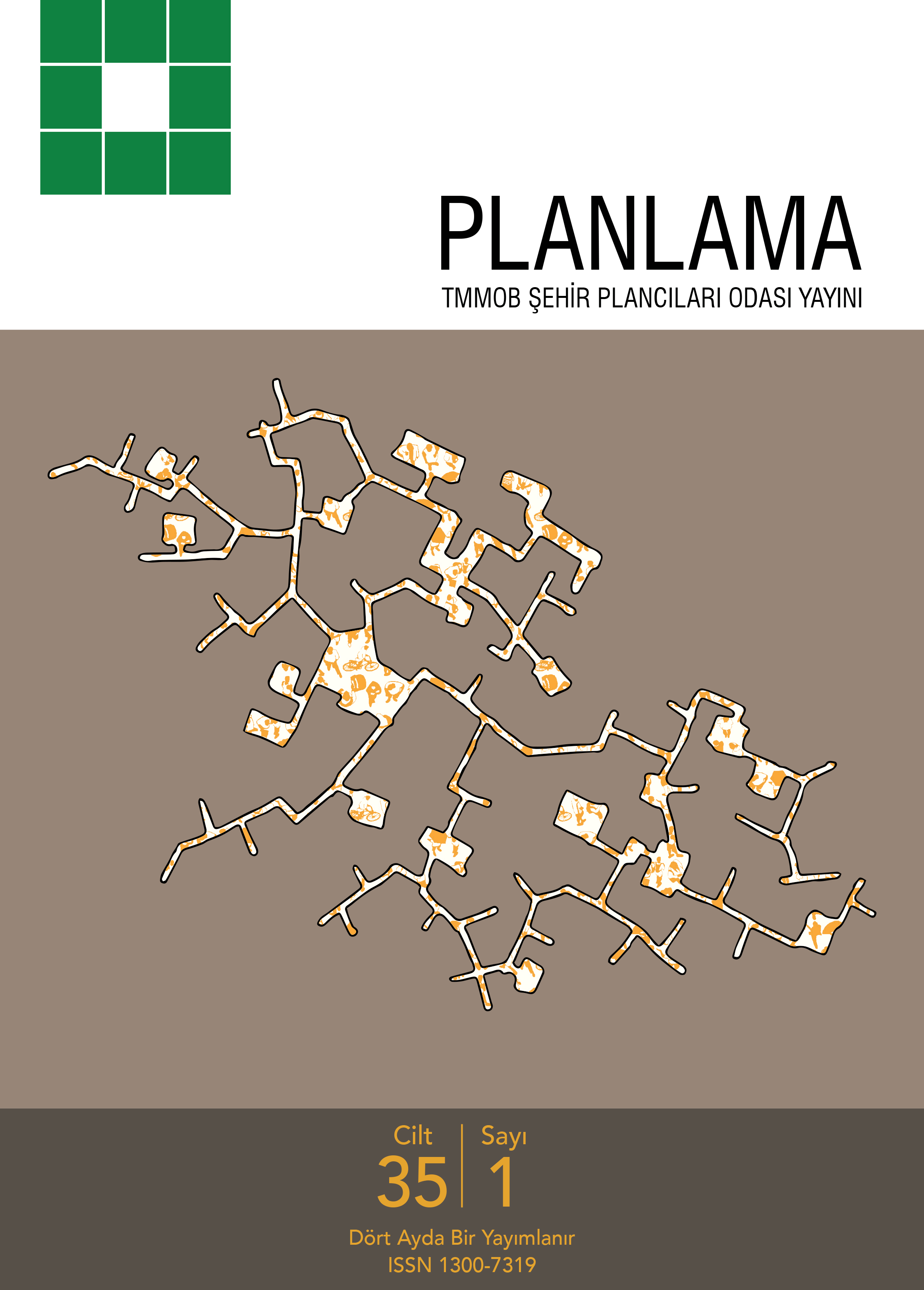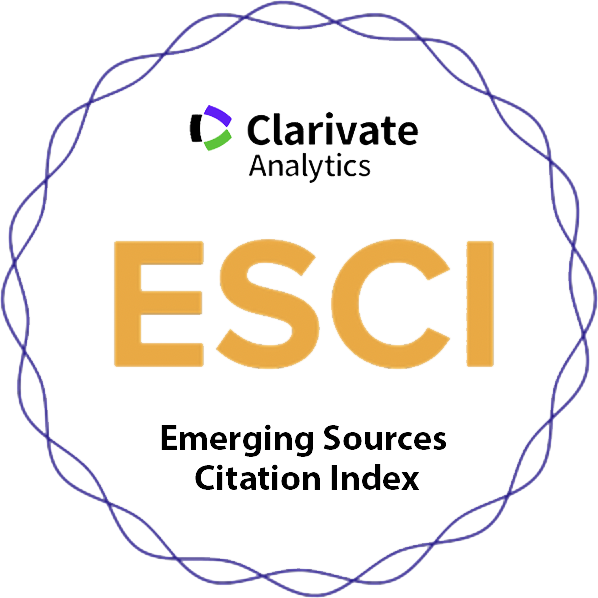Volume: 29 Issue: 3 - 2019
| REVIEW | |
| 1. | Applications of Local Democracy Development in Local Politics: Consensus Based Cooperation Development Example Ümmühan Kaygısız doi: 10.14744/planlama.2019.07078 Pages 185 - 194 Today, countries are leading the leadership of local governments in the field of local politics. Along with transformations in the international arena, traditional approaches to public administration are being transformed, long-standing applied practices and procedures are questioned, and innovations in democratic and managerial practice are increasing. Besides these, the role and purpose of the elected local authorities is re-glanced and reshaped. The international arena has shown a significant increase in the number of regional networks of local authorities, based on common economic, sectoral and regional interests. This also led to a concentration of national-specific approaches to different stakeholder groups, particularly in the context of countries local politics and local democracy. On the other hand, the high level of insecurity in political institutions, a growing sense of weakness among many citizens, indicates that judge democratic governance systems are not sufficient for collective dialogue and learning. At this point, different applications and institutions have gained importance in public governance systems. Circular institutional arrangements in some European countries and the City Councils are these. A citizen-centered circular design with a large number of participants and significant consensus points on which the ideas of different participants are expressed. The main purpose here is to increase the capacity of governance and at the same time to learn the current organization. The aim of the study is to demonstrate the changing citizens roles by informing about the practices that are evaluated together with the developments in public administration. |
| 2. | Thinking on the Transformation of the Public Sphere and the Communicative Nature of Urban Space Meriç Demir Kahraman doi: 10.14744/planlama.2019.87609 Pages 195 - 201 The debates and literature on what is publicness and how it is formed have been developed substantially in the studies from the domain of social sciences. In all these studies, the concept of the public sphere is used to describe the various aspects that reach beyond the physical limits of publicness. Within this approach, the production and (re)production of publicness and public spheres are independent of the physical space by the expression of a communicative phenomenon. However, the aspects of publicness that reach beyond the physical limits do not deny or disregard the existence of conventional public spaces in a given urban pattern. On the other hand, while cities provide a spatial interface for social processes bringing diverse communities and activities together, simultaneously social processes define and transform cities spatially. In other words, it is not possible to picture a communication process between people independently of space. In accordance, the main motivation of this study is to open a theoretical discussion on the publicness and the communicative nature of urban space in a broad perspective. The motivation aims to develop an approach that broadens the social perspective on spatial practices in the organization of urban spaces. |
| RESEARCH ARTICLE | |
| 3. | Analysis of the Regulation of Zoning Reconciliation in Local Governments Zeynel Abidin Polat doi: 10.14744/planlama.2019.04796 Pages 202 - 209 Kırsal alandan kentsel alanlara göçlerin artmasıyla birlikte kentleşme olgusu ortaya çıkmıştır. Artan kentleşmenin neticesinde konut ihtiyacı da artmış ve sonuçta konut üretimi de hızlanmıştır. 2000li yılların başına kadar hızlı nüfus artışına rağmen aynı oranda artmayan konut stoku, kırdan kente göçen nüfusun kendi barınma ihtiyacını büyük ölçüde kent çeperinde hazine veya özel araziler üzerine yasadışı konutlar inşa ederek karşılamaya itmiştir. Bununla birlikte yasal olarak yapılmasına engel bulunmayan fakat çeşitli sebeplerden dolayı tamamlanamayan veya kontrolden geçemeyen konut projeleri de bulunmaktadır. Alınan tedbirlere rağmen kentlerimizdeki kaçak yapılaşma ve gecekondu üretimi olanca hızıyla devam etmiştir. Kentsel alanların yönetiminden sorumlu olan yerel yönetimler çeşitli sebeplerle kaçak yapılaşmayı engelleyememiştir. Günümüzde ise alınan tedbirler neticesinde gecekondulaşma oranı gittikçe azalmıştır. Hukuki olarak kaçak sayılan bu yapılarda oturanların imar, elektrik doğalgaz, su ve kanalizasyon, ulaşım gibi kentsel alt yapı ihtiyaçlarının giderilmesinde ve vergilerin toplanmasında ciddi sorunlar yaşanmaktadır. Kaçak yapılaşma ve gecekondu üretimine yönelik tedbirlerin (Tarihsel ve alansal sınırlamalar) alınmaması ya da tedbirlerin (Ör. Yıkım kararları) yeterince uygulanmaması kaçak yapılaşma ve gecekondulaşmayı hızlandırmıştır. Bu durumun oluşmasının temel sebebi yerel yönetimlerin siyasi geleceklerini devam ettirebilmek için bazı kaçak yapıları görmezden gelmesidir. Bu sorunları çözebilmek için geçmişten günümüze kadar çeşitli imar afları çıkartılmıştır. Bu aflardan en yenisi olan ve kamuoyunda İmar Barışı olarak da bilenen düzenleme 7143 sayılı Vergi ve Diğer Bazı Alacakların Yeniden Yapılanması ile Bazı Kanunlarda Değişiklik Yapılmasına İlişkin Kanun dur. Bu kanunun 16. Maddesi gereğince 31/12/2017 öncesinde yapılan ruhsatsız veya ruhsat ve eklerine aykırı yapıların kayıt altına alınması amaçlanmıştır. Bu çalışmanın amacı; Türkiyede imar affı sürecini ve eylemlerini yönlendiren yasal ve yönetimsel faaliyetleri ele alarak İmar Barışı düzenlemesinin yerel yönetimler düzeyinde hukuki, sosyal, ekonomik etkilerini analiz etmektir. Çalışmada, Türkiyede imar affı konusuna ilişkin yasal ve yönetimsel yapının tarihsel süreç içerisinde karşılaştırmalı analizini içeren bir yöntem izlenmiştir. Bu bağlamada çalışmanın Türkiyede imar sorunlarının çözümüne yönelik alternatif model arayışlarına katkıda bulunacağı düşünülmektedir. |
| 4. | Instrumentalization of Planning Within the Scope of Decentralization, Simplification, Deregulation and Re-regulation Policies; the Impact of Parcel-scale Plan Amendments for Risky Buildings Upon Urban Space in Bursa Zeynep Ece Güler, Levent Ünverdi doi: 10.14744/planlama.2019.42650 Pages 210 - 228 Metropolitan cities in Turkey have been re-organized to play a significant role for global capital as result of the neoliberal process after the 1980s. Consequently, the spatial structure has also undergone a change and transformation. Localization, which is an indispensable part of Turkey integration process into the global capital through cities since the 2000s, has been determinant in setting up the basic policies to govern the ongoing change and transformation of metropolitan cities. Like many countries, the construction sector has been purposely supported used as a political tool for the development of macroeconomics in Turkey as well. In this regard, direct and indirect public infrastructure investments, legal and administrative arrangements, simplification of planning and zoning, and decentralization, deregulation and re-regulation of the state have all been used as steps taken to overcome the obstacles against acceleration of the accumulation rate. Urban regeneration practices, as spatial constants facilitating the accumulation strategy aimed at the commodification of space, became the key tool in planning practices while the authority of zoning and planning was transferred to local administrations to a great extent. Decentralization became the central strategy that paved the way for public-private cooperation. As an example of this strategy in Bursa, the authority for approval of the buildings at risk was transferred to Bursa Metropolitan Municipality. The main purpose of this study is to reveal the effects of this shift in authority upon urban space in Bursa. In this context, the method to be followed in the study is to determine the parcels with risky buildings and to analyze the data on the approved plan amendments within the scope of periodic, spatial distribution and concentration trends and their impact upon urban space. The findings obtained in this study reveal that the process of liberalization and deregulation of planning and zoning processes through the empowerment of local authority to loosen the barriers to capital within the scope of neoliberal policies has led to loss of public benefit in urban regeneration practices, while focusing on economic expectations and decreasing urban living standards as it mostly takes place in areas not requiring emergent intervention. |
| 5. | Squares in Urban Belonging, the Example of Trabzon Municipality Square Havva Özdoğan doi: 10.14744/planlama.2019.60251 Pages 229 - 246 Social life takes place in public spaces such as streets and squares. Public spaces; accumulates traces of public life and creates public memory. Urban spaces, which are the symbols of the past or the root of the public memory, are effective in building urban belonging. When the squares are accepted as one of the important representatives of social life; It is important to examine the role of squares in providing urban belonging and the effects of formal changes in squares on the feelings of root and belonging. The aim of this study is to examine the role of urban squares in public memory and their effects on urban belonging. In this context, the study was conducted on Trabzon-Municipality Square scale. In Trabzon city scale; Municipality Square, which has continuity in the context of spatial and historical continuity, its role in social life, its position in the city, has been considered as a study area. Research data; The survey was conducted in Trabzon Municipality Square during August-2016 with 50 people and cognitive mapping methods were performed on 37 people. The numerical data were evaluated statistically. Data obtained from cognitive mapping were evaluated in the context of social cognition mapping. It is seen that concepts such as trust in urban areas, space recognition and spatial experience support spatial and urban belonging. Depending on the spatial experience, the degree of attachment to the square varies. |
| 6. | Digital Representation of Seka Paper Mills Industrial Heritage Üftade Muşkara, Oylum Tunçelli doi: 10.14744/planlama.2019.36002 Pages 247 - 258 Industrial heritage today is being taken even more seriously by academes. It is due to the instituting of heritage studies across humanities, social sciences and natural sciences and developments in contemporary archaeology. Industrial heritage is broadly defined by many specialists after Nizhny Tagil Charter (2003) as consisting of the remains of industrial culture which are of historical, technological, social, architectural or scientific value. Meantime, industrial heritage comprises more then just material culture, but also valuable intangible forms of heritage. In the case of factories as the products of early industrial developments in Turkish Republic during 20s and 50s, they provide us important insights about the structural alteration in culture and social life in the region. Lives in factories and their campus areas were the representation of transforming identities of young republic. Therefore, preserving and conserving of such sites should consider not just the building itself but tangible and intangible heritages values together. Temporal layers including the time when the factory was still active, when it was abandoned and spatial layers including living and working quarters of industrial sites should be equally transmitted to various targets groups. This project considers how digital visualization contributes to perception of visitors with maintaining cultural mediation in SEKA Paper Museum situated former pulp and paper mill in Kocaeli district. |
| 7. | The Organization of Urban Space and Socio-Economic Characteristics: A Graph Theory-Based Empirical Study Using Hierarchical Cluster Analysis Edward Boampong, K. Mert Cubukcu doi: 10.14744/planlama.2019.61687 Pages 259 - 270 The relationship between the socio-economic factors and the organization of urban space has not received adequate attention in the literature. This study aims to answer the question: Is the organization of urban space associated with social and economic characteristics? The city of Izmir, Turkey, has been selected as the study area and the neighborhoods over 300 in number are grouped into 6 clusters based on their similarities pertaining to the social and economic indicators using hierarchical cluster analysis. The neighborhoods which are closest to the cluster centers selected as the cluster representatives. The organization of space in the representative neighborhoods is quantified using graph theory indices. The results from the ANOVA performed at the global level (or at the neighborhood level) and the post hoc Fishers least significant difference tests performed at the local level (or at the node or edge level) both reveal that neighborhoods with different social and economic characteristics have different spatial organizations, and they are different in terms of the network accessibility levels measured through graph theory indices. The findings clearly indicate more developed social and economic conditions co-exist with more developed network topologies. The empirical findings of the present study put forward that the planning process is far from providing similar urban spatial organizations for people that differ in social and economic characteristics, and that is a major real-life problem. It is clear that we cannot and should not enforce similar spatial layouts in all neighborhoods, but we can work for achieving a heterogeneous social and economic structure within each neighborhood through urban policies and development plans. The method described in this study can then be used to assess the degree of success in achieving this aim. |
| 8. | From Green Space to Tradition: Tangible/Intangible Cultural Heritage Dichotomy, Cultural Landscape and Protecting Yedikule Vegetable Gardening as World Heritage Bahar Aykan, İpek Başyurt doi: 10.14744/planlama.2019.03164 Pages 271 - 287 As rare living examples of Istanbuls long-standing vegetable gardening tradition dating from the Byzantine period, Yedikule vegetable gardens are located within the borders of the Historic Areas of İstanbul in the UNESCO World Heritage List. Surrounding the historic land walls, these vegetable gardens are on the agenda since 2013 with plans to transform them into parks and recreation areas. Although this may appear contradictory to the World Heritage status of the vegetable gardens at first glance, these gardens are considered to be green spaces surrounding the land walls and do not have a protection status. Based on in-depth interviews with Yedikule vegetable gardeners, this article aims to discuss the steps that can be taken in the presence of the convention to address and protect the vegetable gardening tradition together with the land walls through a cultural landscape approach. The category of cultural landscapes that was created in 1992 has enabled the identification and protection of both tangible and intangible characteristics of an area as a World Heritage site. Yedikule vegetable gardening has been carried on with traditional methods and techniques for generations, and cultural landscape category offers an opportunity for its protection as an organically evolved continuing landscape, together with the land walls with which it has co-existed for centuries. Such a change will provide the possibility to generate national and international public opinion to sustain vegetable gardening tradition and to develop policies and projects to support gardeners as heritage bearers and involve them in the decision-making processes. |
| 9. | Evaluation of the Retaining Wall as Urban Identity Element -Case of Artvin Zehra Eminagaoglu, Hilal Surat doi: 10.14744/planlama.2019.48568 Pages 288 - 298 Unique urban design can create different places with unforgettable and eye-catching spaces that give a sense of identity. What makes a places identity memorable for people is its distinctive character, which distinguishes it from other places. No matter how good a buildings design is, it cant change its bad surroundings by itself. However, wellorganized urban spaces with structural and natural landscape areas can contribute to reducing the deficiencies or ugliness in the design of a building. Solutions should be produced by considering the city as a whole. In this context, the visual and structural quality of the walls in the city is as important as all the city structures. In this study, the walls along the road to the city center of Artvin were examined in terms of visual quality. Retaining walls have played an essential part in the infrastructure of hilly and mountainous regions around the world as Artvin City. In this study, the views of the inhabitants of the city on the walls are questioned visually by the Semantic Differentiation Method. With the selected adjective pairs, the perceptions of the inhabitants about the walls they see every day are questioned. According to the results, if the walls are improved in direction with the results obtained, it is stated that it may be an important value for the city. |
| OTHERS | |
| 10. | Planlama Dergisi 2019 Yılı Hakem Dizini Page 299 Abstract | |













